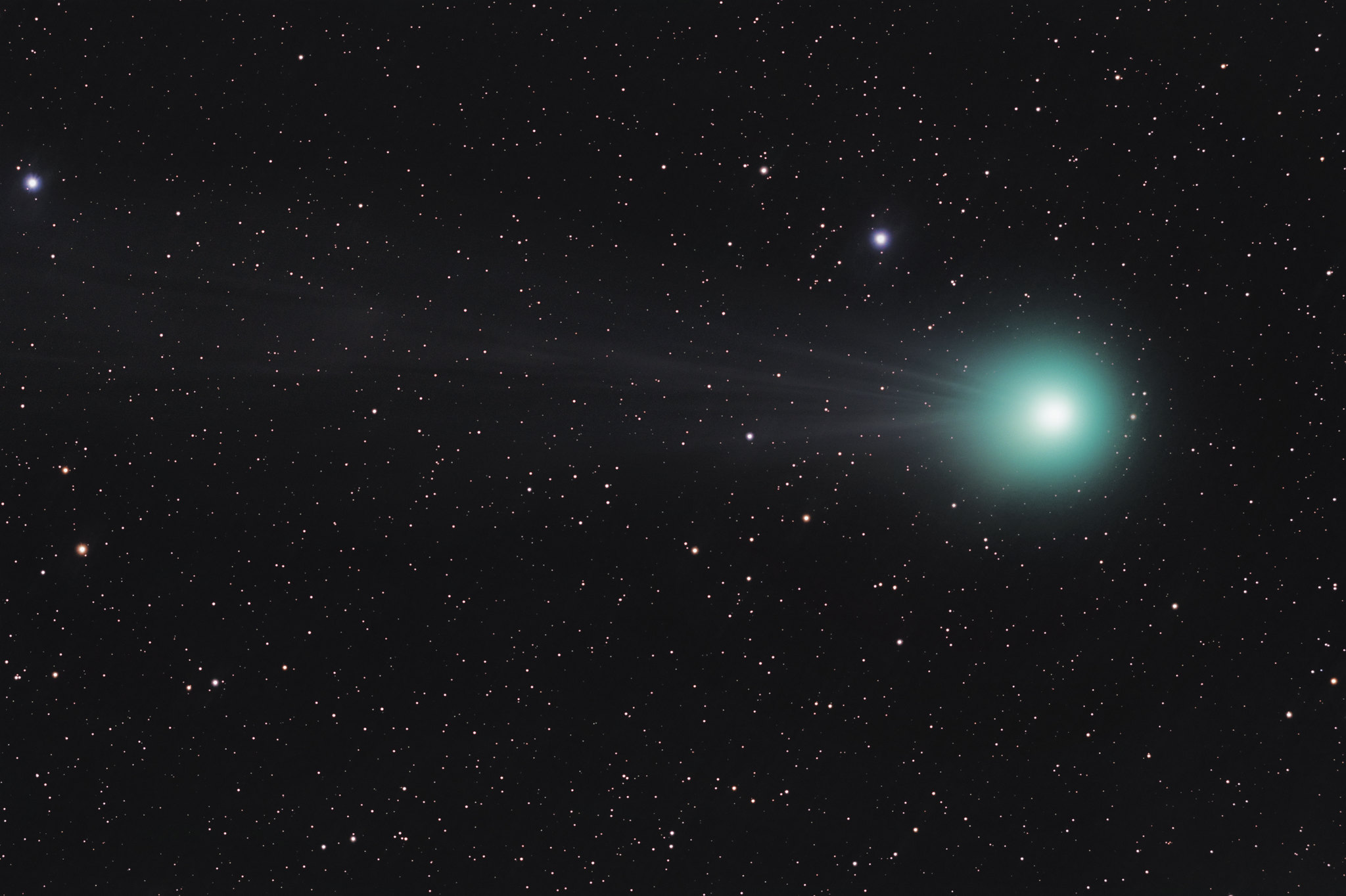At a Glance
- Researchers from the University of Cambridge have explored the potential of cometary impacts to deliver complex organic molecules and prebiotic building blocks to rocky exoplanets.
- The study reveals that impacts at very low velocities are necessary for the survival of these molecules. Comets scattered from beyond the snowline into the habitable zone have a lower minimum impact velocity on planets orbiting solar-type stars than M-dwarfs.
- Tightly packed planetary systems around high-mass stars enable the intact delivery of complex organic molecules. In contrast, impacts onto planets around low-mass stars are highly sensitive to planetary architecture, making the survival of complex prebiotic molecules potentially impossible in loosely packed systems.
- Rocky planets around M-dwarfs experience significantly more high-velocity impacts, posing unique challenges for life on these planets.
- The study suggests that if cometary delivery is important for the origins of life, biosignatures will correlate with decreasing planetary mass, increasing stellar mass, and decreasing planetary separation.

Researchers from the University of Cambridge have investigated the potential of cometary impacts to deliver complex organic molecules and prebiotic building blocks required for life to rocky exoplanets. They found that impacts at very low velocities are necessary for the survival of these molecules. The study shows that comets scattered from beyond the snow-line into the habitable zone have a lower minimum impact velocity on planets orbiting Solar-type stars than M-dwarfs.
The research utilized an analytical model and numerical simulations to demonstrate that the lowest velocity impacts occur in tightly packed planetary systems around high-mass stars, enabling the intact delivery of complex organic molecules. However, impacts on planets around low-mass stars are highly sensitive to planetary architecture, making the survival of complex prebiotic molecules impossible in loosely packed systems. Additionally, rocky planets around M-dwarfs experience significantly more high-velocity impacts, which could pose challenges for life on these planets. The study suggests that the presence of biosignatures will be correlated with decreasing planetary mass, increasing stellar mass, and decreasing planetary separation in the scenario that cometary delivery is important for the origins of life.
Comets are known to contain prebiotic molecules, including amino acids and hydrogen cyanide (HCN), which are essential building blocks for life. The researchers aimed to determine if comets could deliver these complex molecules to other planets in the galaxy. They found that comets need to travel at relatively slow speeds, below 15 kilometers per second, to deliver organic material intact. ‘Peas in a pod’ systems, where planets orbit closely together, provide the most favorable conditions for comets to travel at the right speed. In such systems, comets can be passed or ‘bounced’ from one planet’s orbit to another, slowing them down. If the comet crashes onto a planet’s surface at a slow enough speed, it can deliver intact molecules believed to be life’s precursors. The study suggests that if cometary delivery is important for the origins of life, ‘peas in a pod’ systems would be promising places to search for life outside our solar system.
The research focused on planets similar to Earth, as Earth is currently the only known planet that supports life. The researchers used mathematical modeling techniques to determine the scenarios in which comets could deliver precursor molecules for life. They found that for planets orbiting stars similar to the Sun, low-mass planets in close orbits to other planets in the system are more likely to receive intact prebiotic molecules from comets. However, for planets orbiting lower-mass stars, such as M-dwarfs, it becomes more challenging for complex molecules to be delivered by comets, especially in loosely packed systems. Rocky planets in these systems also experience more high-velocity impacts, which could pose unique challenges for life.
The study provides insights into the types of planetary systems where cometary delivery of complex molecules is possible and could aid in the search for life beyond our solar system.
This research was published in the Proceedings of the Royal Society A: Mathematical and Physical Sciences.
References
- Anslow, R. J., Bonsor, A., & Rimmer, P. B. (2023). Can comets deliver prebiotic molecules to rocky exoplanets? Proceedings of the Royal Society A: Mathematical, Physical and Engineering Sciences, 479(2279), 20230434. https://doi.org/10.1098/rspa.2023.0434
- University of Cambridge. (2023, November 14). ‘Bouncing’ comets could deliver building blocks for life to exoplanets. Phys.Org. https://phys.org/news/2023-11-comets-blocks-life-exoplanets.html











